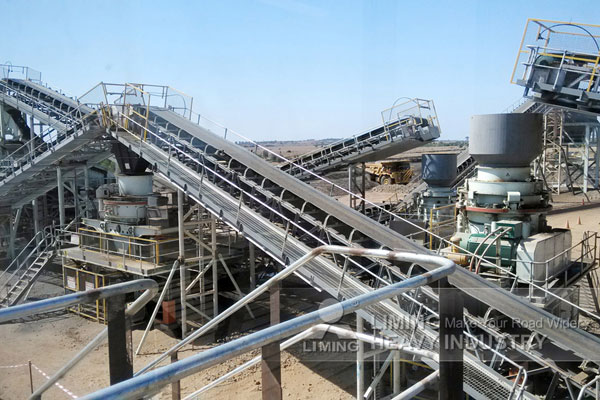A mineral conveyor system plays a crucial role in modern mining operations, significantly enhancing the efficiency and safety of material handling. These systems are specifically designed to transport various materials, such as ores, coal, limestone, and other minerals, from one point to another within the mining facility. The use of conveyors is particularly essential in large-scale mining operations, where manual transportation would be inefficient and costly.

Key Components of a Mineral Conveyor System
A typical mineral conveyor system consists of several key components:
- Conveyor Belt: The belt is the primary medium for transporting minerals. It is usually made of durable materials like rubber, steel, or fabric, depending on the type of material being transported. The belt is available in various sizes, and the selection depends on the amount and type of minerals being handled.
- Pulleys and Rollers: Pulleys are used to drive and support the conveyor belt. These include drive pulleys, which are powered to move the belt, and idler pulleys, which support the belt and help maintain its alignment. Rollers reduce friction between the belt and the structure, ensuring smooth and efficient movement.
- Motor and Drive System: The motor is the heart of the conveyor system, providing the power required to move the belt. Typically, electric motors are used, though hydraulic and pneumatic systems can also be found in certain applications. The motor connects to the conveyor’s drive pulley via a gearbox or other transmission systems, adjusting the speed and torque for the required material flow rate.
- Chutes and Hoppers: These are integral parts of the conveyor system, used for loading and unloading minerals. A hopper is used to store minerals before they are fed onto the conveyor, while chutes direct the flow of minerals along the belt and into designated areas for further processing.
- Control System: Modern conveyor systems are often equipped with sophisticated control systems to monitor the system’s performance, such as sensors that detect belt speed, temperature, and tension. These control systems allow for remote operation and automation, reducing the need for manual intervention.
Benefits of Conveyor Systems in Mining
- Efficiency: Conveyors can move large quantities of materials quickly and efficiently, reducing the need for manual labor and improving overall productivity.
- Safety: Conveyor systems improve safety by minimizing manual handling of heavy materials and reducing the risk of accidents, such as falls or injuries from carrying heavy loads.
- Cost-effectiveness: Although initial installation costs can be high, conveyor systems provide a cost-effective long-term solution due to their durability and reduced operational costs.
A mineral conveyor system is an essential component of any modern mining operation, providing a reliable and efficient way to transport minerals. With various types of conveyors available, mining companies can select the best system to match their specific needs, optimizing both productivity and safety. Additionally, advancements in conveyor technology continue to improve the performance and sustainability of these systems, making them a valuable asset in the mineral extraction industry.
